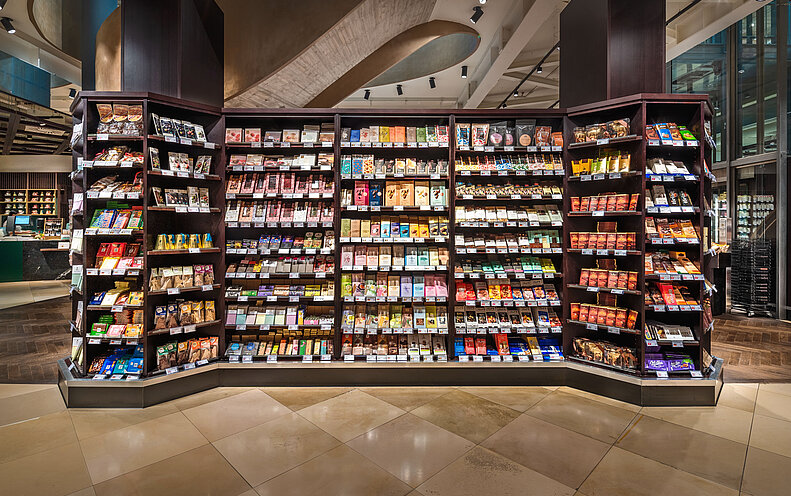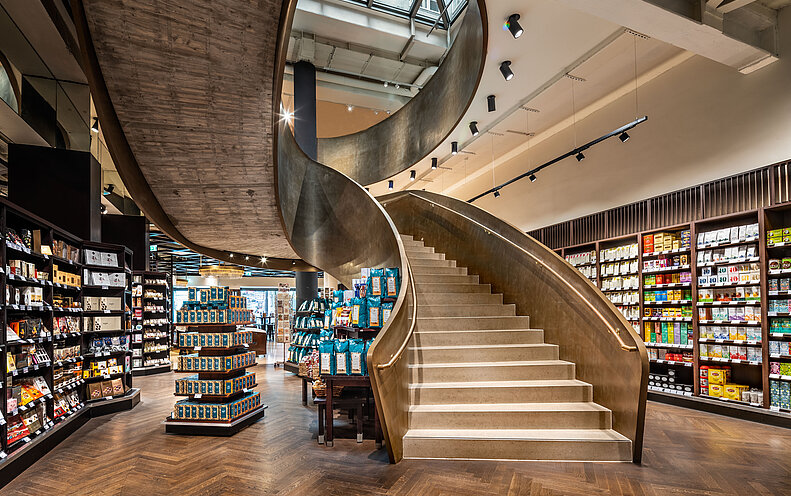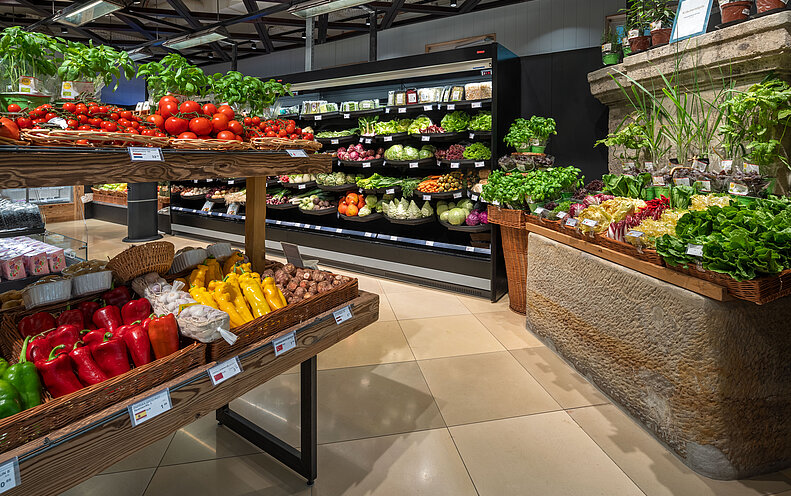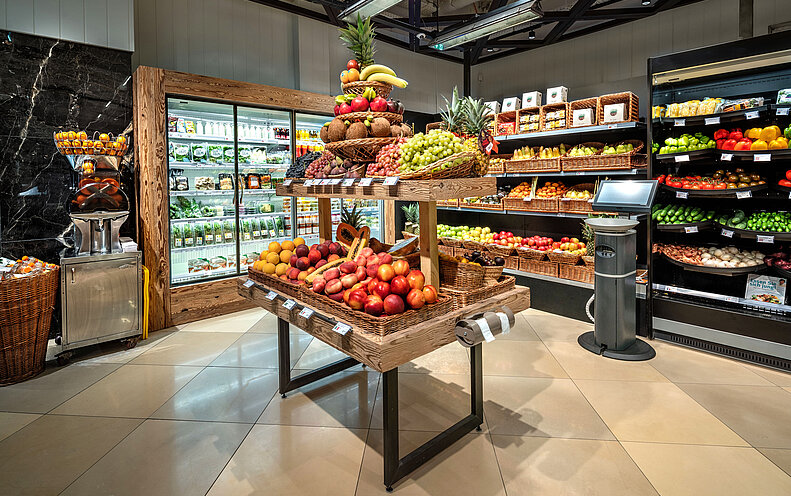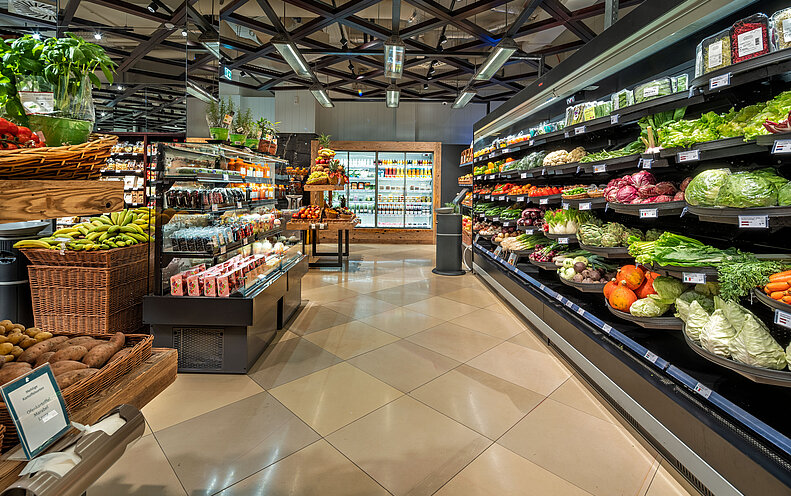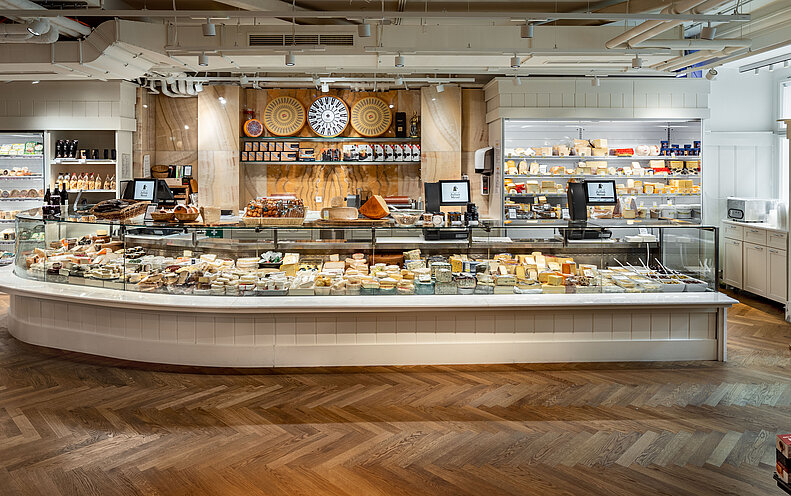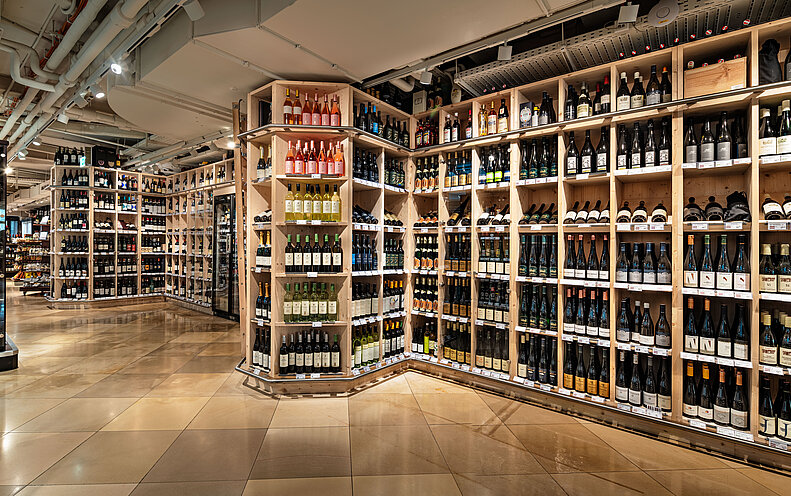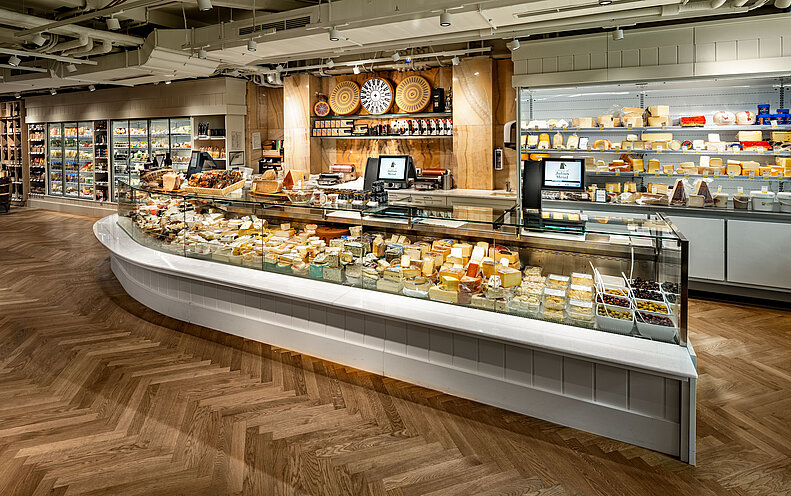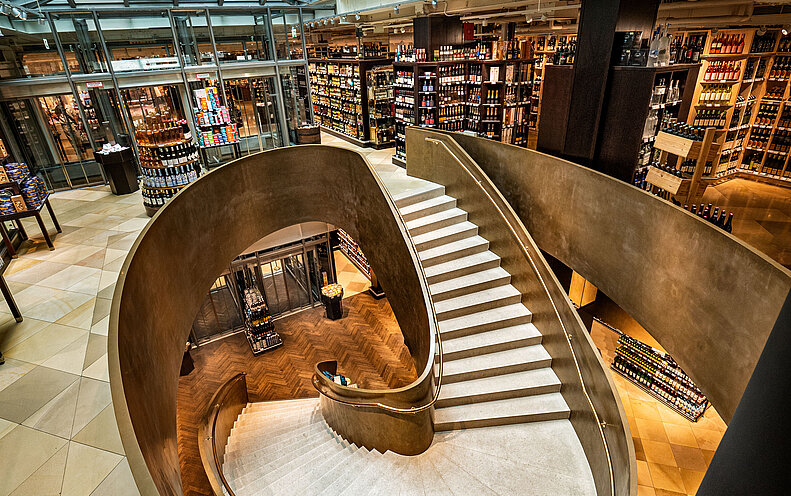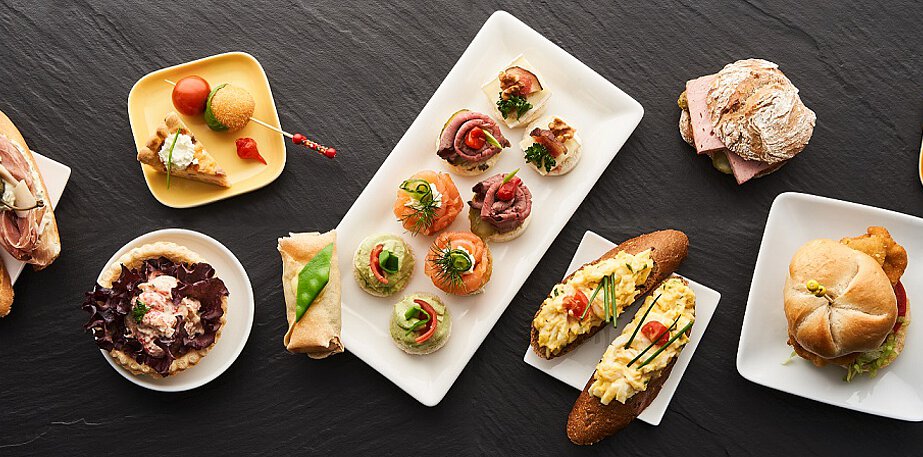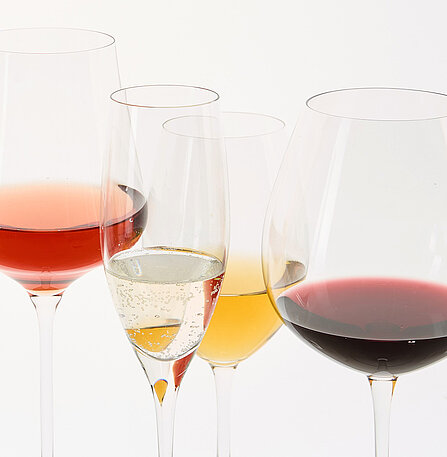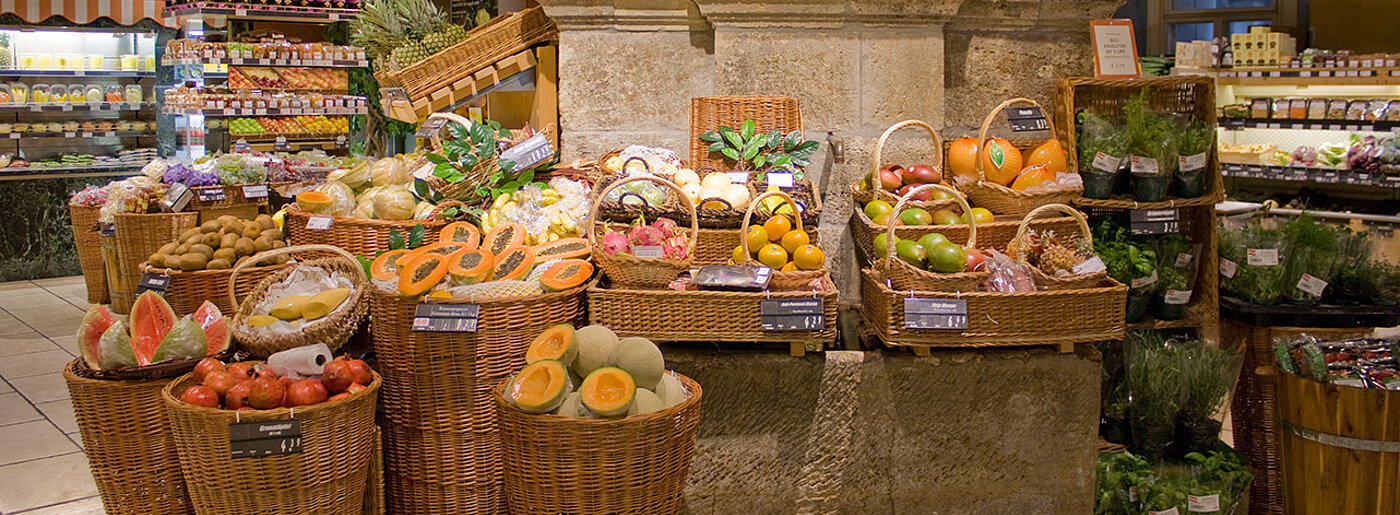
Our History
A very special success story
In the heart of Vienna is Julius Meinl am Graben. Spread over two floors, the house is Austria's first address for gourmets from all over the world. Over the past decades, the delicatessen has developed into the Austrian Mecca for gourmets and plays an important role in the Austrian food market due to its high-quality and diverse assortment of over 17,000 items from around 100 countries.
Julius Meinl am Graben stands for tradition, enjoyment, quality and expertise.
Join us on a short journey back to the origins of our brand and learn more about our history and why we are where we are today.
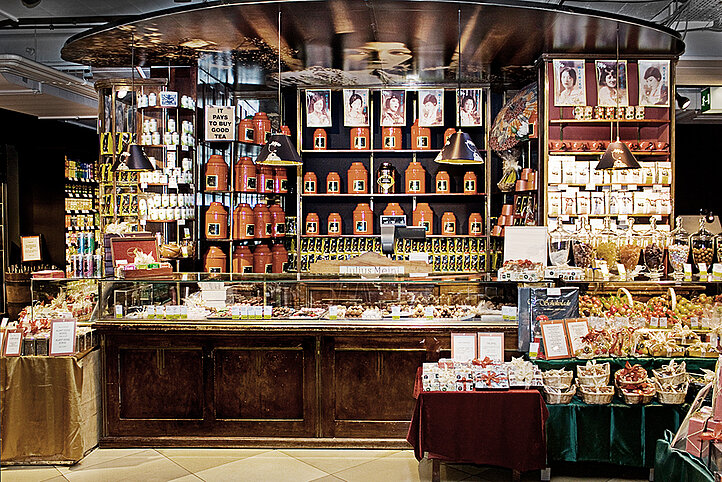
In 1862 Julius Meinl I founded his small store in downtown Vienna. From the very beginning, he greeted his customers with the words "What can I serve you with?" and, in addition to tea, cocoa, sugar and rice, offered above all the best quality in green coffee beans.
In 1874, Julius Meinl had to close his company due to the long-lasting effects of the economic crisis and rebuild it at a new location.
The year was 1877 when Julius Meinl revolutionized the way coffee was roasted. Until then, coffee had only been sold raw and the result was therefore up to the skill of the individual cook. After years of experimentation, Julius Meinl himself developed a patented roasting process that preserved the full natural aroma.
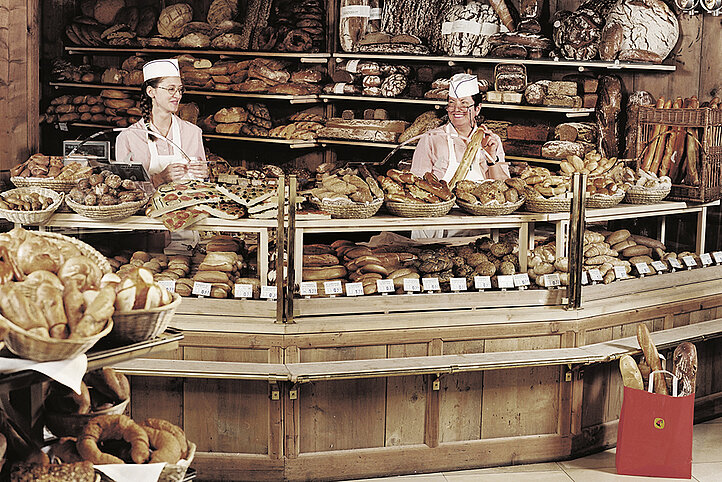
In 1889, Meinl's 20-year-old son joined the flourishing business and from then on shaped the company with his international experience and vision.
In 1912, the company moved into its newly built headquarters in Vienna's 16th district, which provided space for new production facilities and was directly connected to the railroad network.
From 1913, Julius Meinl was the largest food company in the monarchy and was known in many countries for its exquisite delicacies.
From 1918, Julius Meinl defied the economic crisis resulting from the war and expanded into new markets, new products and new sales strategies such as the "Housewives' Afternoons".
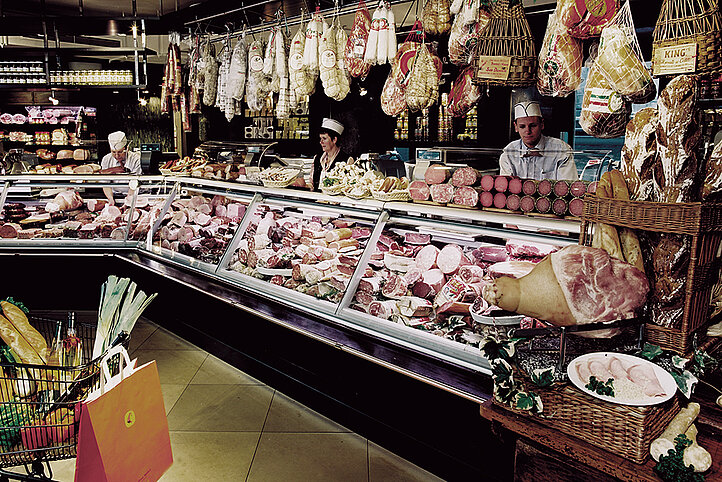
Since 1924 Meinl’s classic logo, designed by graphic designer Joseph Binder, has graced all of our promotional material.
After 1945 all remaining Meinl locations also served as food distribution points, from which people contributed to the joint effort of reconstruction.
In 1954 the Nauseagasse in Ottakring was re-named the Julius-Meinl-Gasse in honour of Julius Meinl II.
In 1955 a new store location opened at Graben 19, a real sensation thanks to its unique services and well-stocked shelves of delicacies.
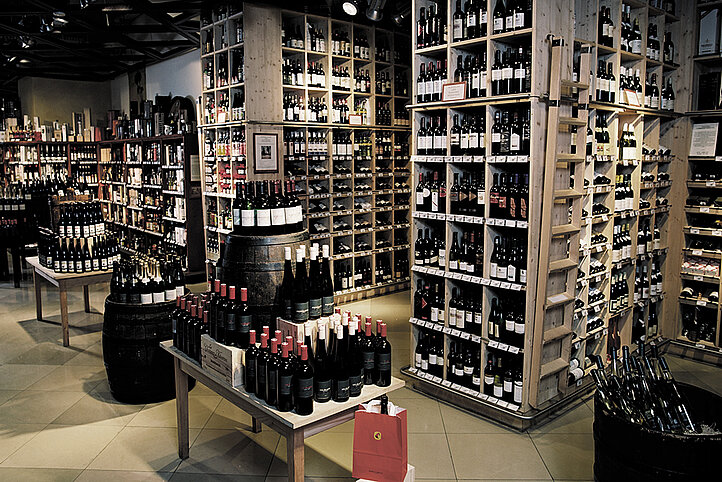
By the end of the 1960s, there were again 280 Meinl stores, plus 78 branches of the Gebrüder Kunz company.
From 1990 onwards, conditions on the Austrian food market became more acute, and rapid expansion and an increasing price war led to turbulence in the company.
In 1999, part of the stores were sold to Rewe and the Julius Meinl flagship store on Graben was reopened freshly renovated as a world-class delicatessen center.
In 2000, the remaining stores were sold to the Spar Group.
And today we continue to write the eventful history of Julius Meinl and his house on the Graben. In order to be able to offer you something special in the future as well, the house was rebuilt. The result is a delicatessen at the highest architectural, economic and technical level. Our ambition is to be one of the best delicatessen stores in Europe.
We have not only rejuvenated our business premises at Graben, but also our "corporate identity". The original logo, which dates back to 1924, has been an unmistakable trademark of our company until today. However, it is no longer in keeping with the times, as there is a worldwide consensus in society that people should no longer be depicted in a typecast manner. The new logo is therefore clearly reduced and modern. It refers to a traditional headgear that defies any typecasting. In addition, petrol green will be the new classic Meinl am Graben color.
